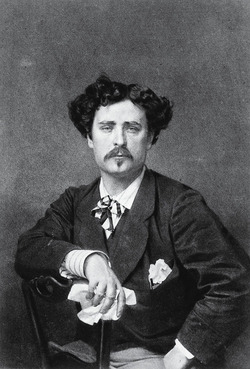Very often we make the mistake of extolling painting to the detriment of other techniques that, like drawing, have had and still have a vital importance in the development and evolution of the history of art.
As one of the oldest forms of expression we know, drawing has accompanied man since his origins, driven by his need to express and bear witness to his ideas, emotions and experiences. In fact, if we think about the academic training of an artist, we will see how drawing has been a fundamental stage in the learning and development of artistic skills, being very often the first medium that every self-respecting artist must master.
Despite being one of the most traditional artistic techniques in the history of art, it was not until the end of the 19th century that it was recognized as a form of artistic expression in its own right. Until then, it was relegated to the background in relation to painting and considered as a simple tool of the artist in the process of creating the true work of art.
Within the Spanish field, there were many artists who either with charcoal, pastel or watercolor brought the drawing technique to its maximum splendor. Among them, the figure of Mariano Fortuny played a stellar role in the international artistic culture of his time, awakening in the art of our country a real desire to emulate everything that had given fame to the Catalan master to the point of becoming the catalyst that led the watercolor technique to its peak period.

In fact, it was thanks to Fortuny’s technical prodigy that, as Théophile Gautier said, watercolor became equal in technical quality to oil painting. Gautier’s words reflect in themselves the way in which Fortuny conceived drawing techniques, using them not only to capture his impressions but also to develop in them fully autonomous works from which a clear pictorial intention is evident.
With the same excellence and virtuosity that characterized his best works in oil, Fortuny found in watercolor an inexhaustible creative source that he developed freely and independently. From his extraordinary facet as a watercolorist we can extract the incessant search for a beauty that, far from sticking to strict reality, he found through imagination and the deployment of technical resources that only emphasize the exquisite taste of the artist, both for the preparation of the scene and for the treatment of the characters, objects and qualities.
An example of this is the pair of tender watercolors whose absolute technical mastery explains the unparalleled recognition he achieved.

The individual treatment of characters, types or objects that, like this peasant girl, were part of the setting of a genre scene, will be a frequent resource during his second stay in Rome. However, far from representing a preparatory or partial study of a later composition, the portrait, which as the attached certificate indicates could correspond to that of the model Ersilieta di Anticoli, brings together each and every one of the premises of his independent works: with a virtuoso mastery of drawing and displaying the preciosity and meticulousness that characterized him, Fortuny captures the subtle qualities of the costume and headdress, as well as the expressiveness of the female face whose soft and somewhat melancholy features contrast with the folkloric character of the costumes.
On the other hand, “El almuerzo del borriquillo” exemplifies Fortuny’s unique ability to synthesize the elements of the costumbrista scene, extracting the essential thanks to a quick and agile execution with which he elevates to a timeless status any daily situation until capturing the beauty that hides behind them.

Thanks to this anecdotal production, which already foreshadowed his famous house paintings, Fortuny reaped unprecedented success, not only among the artists who followed him, but also among the most prestigious collectors and dealers of the time. His interest in careful observation and the extreme refinement of his creations, soon consolidated him as an artist of international fame, originating the term known as “fortunyismo”, to define the style developed by several generations of artists imbued with the irrepressible creative and innovative spirit of the painter.



